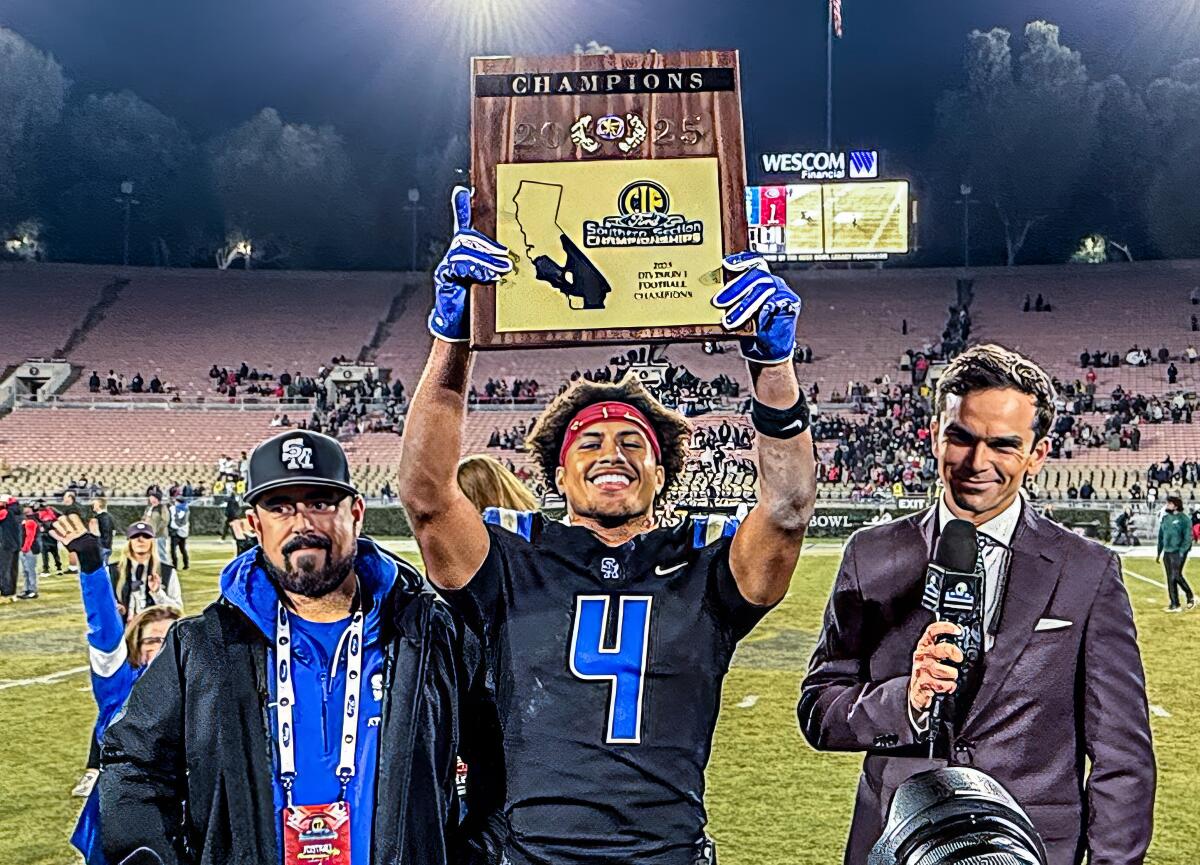The Times’ 2025 football player of the year: Trent Mosley
Everyone seemed to know in the first quarter of the Southern Section Division 1 final at the Rose Bowl what Santa Margarita High was going to do again and again — get the ball into the hands of Trent Mosley.
Every offensive play in the opening 12 minutes by Santa Margarita involved a pass or a run by Mosley.
“Why not?” quarterback Trace Johnson said.
In the end, Santa Margarita defeated Corona Centennial 42-7 with Mosley scoring four touchdowns and catching 10 passes for a stunning 292 yards. Two weeks later, he made 11 catches for 183 yards and scored three touchdowns in a 47-13 win over De La Salle in the CIF Open Division state championship bowl win.
It was the culmination of a return to greatness for Mosley, who was the Trinity League player of the year as a sophomore, then was slowed by injuries last season. He finally got healthy this season after an injury in the opening game, and every opponent knew the challenge he presented.
Mosley has been selected The Times’ football player of the year in the Southland.

Trent Mosley raises the Southern Section Division 1 championship trophy won by Santa Margarita at the Rose Bowl.
(Craig Weston)
There’s little doubt where his talent comes from — it’s in his genes. His mother, Cindy, was the Heisman Trophy winner for soccer at Notre Dame. His father, Emmett, played football at Notre Dame. His sister, Jalyn, played soccer at Iowa. His brother, Emmett, is a receiver at Texas. Younger brother Grant is another top receiver at Santa Margarita. The three brothers used to see who was most competitive.
“Usually my basketball games with my brothers would end up in fights. Video games, fights,” Trent said. “Blessed to have the experience and their guidance.”
There’s not a sport or position Mosley can’t master. He used to love playing lacrosse, and his versatility is his super power. When he shows up to USC, his college choice, the Trojans will have plenty of plans on how to use him, whether it’s receiver, wildcat quarterback, returning punts or kickoffs.
Centennial coach Matt Logan called him “phenomenal.” De La Salle coach Justin Alumbaugh said, “Good lord.”
Mosley added additional speed this season that led to even more big plays and showed what he can do when healthy.
“The gifts I’ve been given by God, working out with offseason speed training and also playing lacrosse two years ago — all that coming together produces what I can do now,” he said.
